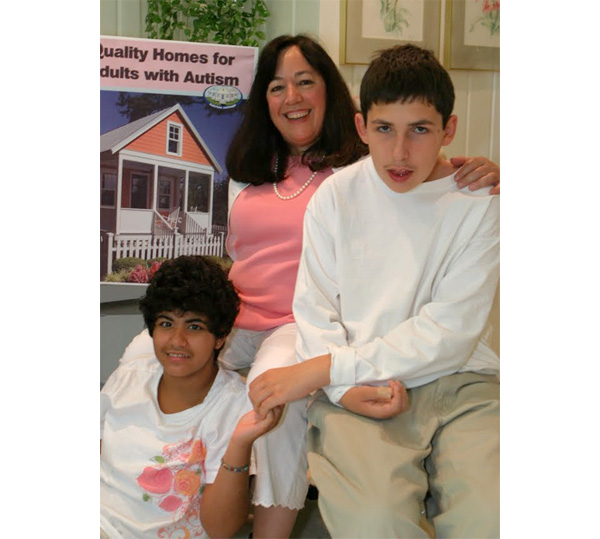Tiny houses may solve a big problem for adults with developmental disabilities: A home of their own.

A small cottage like this one could be perfect for a disabled adult to live in. Image:
We’re fascinated with tiny houses, those 85- to 500-sq.-ft. mini-homes that make great
granny pods, teen rooms, and cozy places for the couple that has (almost) nothing.
But it occurred to me that tiny houses also might be perfect for some developmentally
But it occurred to me that tiny houses also might be perfect for some developmentally
disabled adults who crave a home of their own, but also need supervision from
parents or caregivers.
I ran the idea past my cousin Karen Kaye-Beall, executive director of the Foundation
I ran the idea past my cousin Karen Kaye-Beall, executive director of the Foundation
for Autism Support and Training, and the mother of two adult children with autism —
Amelia, 21; and Tyler, 18.

Credit: Karen Kaye-Beall
For the last 20 years, my cousin has worried about where and how Amelia and Tyler
will live when they are adults, especially after Karen and her husband, Tom, are no
longer able to care for them.
“It’s always in a parent’s mind,” she says. “How will they be independent? How will
“It’s always in a parent’s mind,” she says. “How will they be independent? How will
they live?“
Tiny houses may be an answer. Here’s why:
People with autism rely on predictable routines and environments to navigate life. Tiny
homes provide a place for everything, and everything in its place, a big part of the life
skills training that Amelia and Tyler received growing up.
Many people with autism have issues with sound — sounds they make that disturb
others, and sounds others make that disturb them. A detached tiny home eliminates
the adjacent walls with scant soundproofing, affording everyone some quiet.
Many people with autism are not able to hold jobs, and Social Security benefits are not
enough to pay for decent rentals in nice neighborhoods, Kaye-Beall says. Tiny
homes, which typically sell for between $25,000 and $70,000, are economical
alternatives.
Tiny homes can give some people with developmental disabilities a “charming” place
to call home, Kaye-Beall says. “This is my house — with little windows and shutters
and a tiny front porch. It’s my home. People with disabilities want that, too.”
If the idea appeals to you, check out these pictures of a variety of tiny homes.
If the idea appeals to you, check out these pictures of a variety of tiny homes.
Read more: http://www.houselogic.com/blog/home-thoughts/housing-for-disabled/?
nicmp=social&nichn=widgets&niseg=BoxLayout#ixzz2I9XTyn2u
